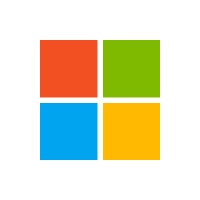The Art of Building an Operating System: A Journey from Scratch
November 6, 2024, 5:33 am
Creating an operating system (OS) is like sculpting a statue from a block of marble. It requires vision, skill, and patience. Many developers dream of crafting their own OS, but the task often seems daunting. However, when broken down into manageable steps, the process becomes less intimidating. This article will guide you through the essential stages of building a simple operating system from the ground up, along with the tools and knowledge you'll need.
At its core, an operating system is a collection of programs that manage computer hardware and facilitate the execution of applications. Think of it as the conductor of an orchestra, ensuring that each instrument plays in harmony. Popular examples include Windows, Linux, and macOS. To create your own OS, you must delve into low-level programming, memory management, file systems, and hardware interfaces.
**Preparation: The Foundation**
Before diving into development, gather your tools and foundational knowledge. You’ll need:
1. **Assembly and C**: These are the primary languages for writing OS kernels.
2. **Emulator**: Tools like Bochs or QEMU allow you to test your OS without rebooting your physical machine.
3. **Compiler**: A compiler, such as GCC, translates your code into a language the processor understands.
4. **Bootloader**: This is the first program that runs when the computer starts. GRUB is a popular choice for beginners due to its extensive support.
**Step 1: Crafting the Bootloader**
The bootloader is the first program that springs to life when the computer powers on. It prepares the system and loads the kernel. Using GRUB simplifies this process.
Here’s a simple boot sector example in assembly:
```assembly
[BITS 16]
[ORG 0x7C00]
start:
cli
mov ax, 0x07C0
add ax, 288
mov ss, ax
mov sp, 4096
mov ax, 0x0003
int 0x10
mov si, msg
call print_string
halt:
hlt
print_string:
mov ah, 0x0E
.repeat:
lodsb
or al, al
jz .done
int 0x10
jmp .repeat
.done:
ret
msg db 'Hello, world!', 0
times 510-($-$$) db 0
dw 0xAA55
```
This code prints "Hello, world!" on the screen. Compile it into a binary format and write it to the boot sector.
**Step 2: Developing the Kernel**
Once the bootloader has done its job, control transfers to the kernel. The kernel is the heart of the OS, managing memory, handling interrupts, and interacting with hardware.
Here’s a minimal kernel example in C:
```c
void kernel_main(void) {
char* video_memory = (char*) 0xB8000;
*video_memory = 'X'; // Display 'X' on the screen
while (1); // Infinite loop
}
```
This code directly accesses video memory to display an 'X' and then enters an infinite loop.
**Step 3: Memory Management**
Memory management is crucial for any operating system. It involves setting up page tables, managing virtual memory, and allocating resources for applications. A simple OS might use static memory allocation, but more complex systems require dynamic allocation.
**Step 4: Adding Drivers**
To interact with devices like keyboards, mice, and hard drives, your OS needs drivers. These programs allow the OS to manage hardware. Drivers communicate through input/output ports and interrupts.
Here’s a simple keyboard input handler:
```c
#define KEYBOARD_PORT 0x60
void keyboard_handler(void) {
unsigned char scancode = inb(KEYBOARD_PORT); // Read key code
// Process key code
}
```
**Step 5: Implementing a File System**
For your OS to handle files, you need a file system. This could be a simple structure that stores files in sequential memory blocks or a more complex system like FAT or ext.
**Step 6: Command Line Interface (CLI)**
Once the core functions are in place, you can add a command line interface (CLI). This allows users to input commands and interact with the OS.
Here’s a simple command to clear the screen:
```c
void cls() {
char* video_memory = (char*) 0xB8000;
for (int i = 0; i < 80 * 25 * 2; i++) {
video_memory[i] = 0; // Clear screen
}
}
```
**Conclusion: The Journey Ahead**
Building an operating system is a complex yet rewarding endeavor. It demands a deep understanding of low-level programming and computer architecture. Starting with a simple bootloader and kernel, you can gradually enhance your OS with new features.
Creating your own OS not only deepens your understanding of existing systems like Linux and Windows but also provides unique hands-on experience with hardware and low-level code.
In the future, you can expand your OS to support multitasking, advanced drivers, and user interfaces. Even a minimal OS that performs basic functions is a significant achievement.
So, roll up your sleeves and embark on this exciting journey. The world of operating systems awaits, full of challenges and discoveries.
At its core, an operating system is a collection of programs that manage computer hardware and facilitate the execution of applications. Think of it as the conductor of an orchestra, ensuring that each instrument plays in harmony. Popular examples include Windows, Linux, and macOS. To create your own OS, you must delve into low-level programming, memory management, file systems, and hardware interfaces.
**Preparation: The Foundation**
Before diving into development, gather your tools and foundational knowledge. You’ll need:
1. **Assembly and C**: These are the primary languages for writing OS kernels.
2. **Emulator**: Tools like Bochs or QEMU allow you to test your OS without rebooting your physical machine.
3. **Compiler**: A compiler, such as GCC, translates your code into a language the processor understands.
4. **Bootloader**: This is the first program that runs when the computer starts. GRUB is a popular choice for beginners due to its extensive support.
**Step 1: Crafting the Bootloader**
The bootloader is the first program that springs to life when the computer powers on. It prepares the system and loads the kernel. Using GRUB simplifies this process.
Here’s a simple boot sector example in assembly:
```assembly
[BITS 16]
[ORG 0x7C00]
start:
cli
mov ax, 0x07C0
add ax, 288
mov ss, ax
mov sp, 4096
mov ax, 0x0003
int 0x10
mov si, msg
call print_string
halt:
hlt
print_string:
mov ah, 0x0E
.repeat:
lodsb
or al, al
jz .done
int 0x10
jmp .repeat
.done:
ret
msg db 'Hello, world!', 0
times 510-($-$$) db 0
dw 0xAA55
```
This code prints "Hello, world!" on the screen. Compile it into a binary format and write it to the boot sector.
**Step 2: Developing the Kernel**
Once the bootloader has done its job, control transfers to the kernel. The kernel is the heart of the OS, managing memory, handling interrupts, and interacting with hardware.
Here’s a minimal kernel example in C:
```c
void kernel_main(void) {
char* video_memory = (char*) 0xB8000;
*video_memory = 'X'; // Display 'X' on the screen
while (1); // Infinite loop
}
```
This code directly accesses video memory to display an 'X' and then enters an infinite loop.
**Step 3: Memory Management**
Memory management is crucial for any operating system. It involves setting up page tables, managing virtual memory, and allocating resources for applications. A simple OS might use static memory allocation, but more complex systems require dynamic allocation.
**Step 4: Adding Drivers**
To interact with devices like keyboards, mice, and hard drives, your OS needs drivers. These programs allow the OS to manage hardware. Drivers communicate through input/output ports and interrupts.
Here’s a simple keyboard input handler:
```c
#define KEYBOARD_PORT 0x60
void keyboard_handler(void) {
unsigned char scancode = inb(KEYBOARD_PORT); // Read key code
// Process key code
}
```
**Step 5: Implementing a File System**
For your OS to handle files, you need a file system. This could be a simple structure that stores files in sequential memory blocks or a more complex system like FAT or ext.
**Step 6: Command Line Interface (CLI)**
Once the core functions are in place, you can add a command line interface (CLI). This allows users to input commands and interact with the OS.
Here’s a simple command to clear the screen:
```c
void cls() {
char* video_memory = (char*) 0xB8000;
for (int i = 0; i < 80 * 25 * 2; i++) {
video_memory[i] = 0; // Clear screen
}
}
```
**Conclusion: The Journey Ahead**
Building an operating system is a complex yet rewarding endeavor. It demands a deep understanding of low-level programming and computer architecture. Starting with a simple bootloader and kernel, you can gradually enhance your OS with new features.
Creating your own OS not only deepens your understanding of existing systems like Linux and Windows but also provides unique hands-on experience with hardware and low-level code.
In the future, you can expand your OS to support multitasking, advanced drivers, and user interfaces. Even a minimal OS that performs basic functions is a significant achievement.
So, roll up your sleeves and embark on this exciting journey. The world of operating systems awaits, full of challenges and discoveries.

